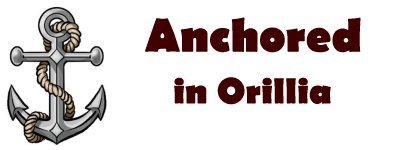a-Port Stock - Anchored in Orillia Mystery Cache
a-Port Stock - Anchored in Orillia
-
Difficulty:
-

-
Terrain:
-

Size:  (micro)
(micro)
Please note Use of geocaching.com services is subject to the terms and conditions
in our disclaimer.

The Orillia Anchor Series was placed by puzzle loving members of the Central Ontario Geocachers. The geocache is not at the posted coordinates, but somewhere within Orillia. You will need to solve the puzzle below to find the geocache! Enjoy!
Anchoring
Anchoring a boat is essential to recreational boaters by giving them the ability to park their boat in the water. Anchoring is helpful to boaters who fish or swim off of their boat and provides a stable and established site to achieve whatever activity is being done.
Anchoring a boat is also critical in emergency situations and is a good safety measure whenever a vessel becomes disabled. There are three types of anchors, the Plow-style, the Fluke-style, and the Mushroom anchor. Plow-style is the most effective for most boats especially larger boats (over 26 feet). It receives its holding power by plowing into the bottom sediments using the boats mass to drag it underneath the soil.
Fluke-style or Danforth anchor is similar to the plow anchor but is more lightweight. This anchor is commonly used on boats smaller than 30 feet but is very effective by using its pointed flukes to bury into the sediment below.
Mushroom anchors are designed for situations which require a permanent anchor with strong holding power. The weight of a mushroom anchor causes it to be slowly buried under soft sediment, giving significant holding power and are typically used for moorings, buoys, and other permanent anchoring needs. Mushroom anchors are not carried on a boat for use as a temporary or short term anchor. Initially there is no holding power due to the significant amount of time required for the anchor to settle and bury itself in the sediment.
A rope anchor line should be at least seven times longer than the depth of the water in the anchorage. A seven to eight foot chain should also be attached between the rope and the anchor in order to reduce the angle of the pull on the anchor facilitated by the chain sinking and lying on the bottom. This is important because in order for the anchor to be effective, the pull must be at a shallow angle rather than vertically. A vertical pull on the anchor will result in the anchor breaking out of the bottom sediment and is used as a technique to break the anchor's hold allowing the anchor to be raised in order to leave the anchorage. The anchor should never be dragged behind a boat or dropped at the stern. This could result in the boat being swamped or filled with water. Tie off the anchor to a bow cleat and pull on it to make sure that the knot is secure. After that make sure the vessel is down wind or down current of the anchor.
After anchoring it is important to check visual sightings and onshore objects or buoys to let the driver know if his boat is secure by the anchor.
Cache is located at 44 36.601 079 23.024
Additional Hints
(Decrypt)
Tebhaq Yriry